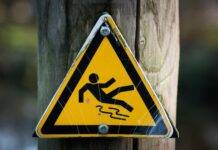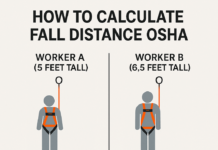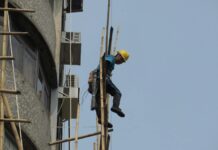
OSHA Fall Restraint System Requirements
Introduction to OSHA Fall Restraint Systems
Safety in the workplace is a priority, especially concerning fall protection. The Occupational Safety and Health Administration (OSHA) in the United States has stringent regulations and requirements regarding fall restraint systems to ensure worker safety. Understanding these requirements is vital for employers and employees alike.
Understanding OSHA Regulations
OSHA Fall Protection Standards
OSHA guidelines outline specific standards for fall protection. Compliance with these regulations is mandatory in industries where workers are exposed to fall hazards.
Key Components of Fall Restraint Systems
Fall restraint systems comprise various components designed to prevent falls and limit the impact in case of a fall. Understanding these components is crucial for effective implementation.
OSHA (Occupational Safety and Health Administration) has specific requirements for fall restraint systems to ensure worker safety. Fall restraint systems are designed to prevent workers from reaching a fall hazard rather than arresting a fall. Here are some key elements and requirements:- Anchorage: Secure attachment points that can withstand the force of a fall. They should be able to support at least 5,000 pounds per worker attached.
- Harnesses: Workers must wear full-body harnesses that distribute fall arrest forces throughout the body. The harness should fit properly and be inspected regularly for any signs of wear or damage.
- Connectors: Use appropriate connectors (such as lanyards or lifelines) that limit a worker’s movement to prevent them from reaching the fall hazard.
- Training: Proper training is crucial. Workers should understand how to use the fall restraint system correctly, including proper fitting of harnesses, connecting to anchorage points, and inspection of equipment.
- Inspection and Maintenance: Regularly inspect and maintain all components of the fall restraint system. Replace any worn or damaged parts immediately.
- Compliance with Regulations: Ensure that your fall restraint system meets OSHA regulations, which are outlined in the Code of Federal Regulations (CFR) Title 29, Part 1926 – Safety and Health Regulations for Construction.
Always consult the specific OSHA regulations and guidelines applicable to your industry and work environment to ensure compliance and the highest level of safety for workers at heights.Importance of Compliance
Preventing Workplace Falls
Compliance with OSHA fall restraint system requirements significantly reduces the risk of falls, which are among the leading causes of workplace injuries and fatalities.
Legal and Financial Implications
Non-compliance with OSHA regulations can lead to severe legal consequences and financial liabilities for employers. Understanding the implications reinforces the necessity of adherence.
Components of an Effective Fall Restraint System
Anchorage Points
Anchorage points serve as secure attachment locations for fall protection equipment, ensuring stability and safety.
Body Harnesses and Connectors
Properly fitting body harnesses and connectors are essential for distributing fall forces across the body and preventing injury during a fall event.
Lifelines and Lanyards
Lifelines and lanyards provide a means of restricting a worker’s movement to prevent falls, offering crucial support in hazardous environments.
Assessing Workplace Risks
Risk Evaluation and Assessment Techniques
Conducting thorough risk assessments helps identify potential fall hazards, enabling the customization of fall restraint systems according to specific workplace needs.
Tailoring Systems to Specific Environments
Each workplace has unique characteristics and risks. Tailoring fall restraint systems to these environments ensures optimal safety measures are in place.
Training and Implementation
Employee Training and Education
Proper training and education programs are indispensable for ensuring workers understand how to use fall restraint systems correctly.
Maintenance and Inspections
Regular maintenance and inspections of fall restraint systems guarantee their effectiveness and compliance with OSHA standards.
Advantages of Compliance
Improved Safety Culture
Compliance fosters a culture of safety, prioritizing the well-being of employees and creating a positive work environment.
Reduced Workplace Accidents
Adhering to OSHA fall restraint system requirements significantly reduces the occurrence of workplace accidents, enhancing overall productivity and employee morale.
Conclusion
In conclusion, adherence to OSHA fall restraint system requirements is imperative for ensuring workplace safety, preventing accidents, and avoiding legal ramifications. Implementing and maintaining effective fall restraint systems not only protects employees but also contributes to a positive safety culture within organizations.
OSHA Fall Protection Requirements
OSHA Anchor Point Requirements
Full Body Harness 100% Tie Off
FAQs
- Why are OSHA fall restraint system requirements essential? OSHA requirements ensure the safety of workers exposed to fall hazards, reducing workplace accidents.
- How often should fall restraint systems be inspected? Regular inspections are crucial; they should be conducted according to manufacturer recommendations and before each use.
- Can generic fall restraint systems work for any industry? No, each industry may have specific requirements; customizing systems to the workplace is crucial.
- What penalties might a company face for non-compliance with OSHA regulations? Penalties can include fines and legal actions, impacting the company’s reputation and finances.
- Is training mandatory for employees using fall restraint systems? Yes, proper training is necessary to ensure employees understand the equipment and its usage, reducing the risk of accidents.
























